Abstract
Analysis of the fingerprints of 571 members of the Habbanite isolate suggest inherited patterns and pattern sequences. A genetic theory has been developed; it assumes that the basic fingerprint pattern sequence is all ulnar loops and that a variety of genes cause deviations from this pattern sequence. Genes that have been proposed include: (1) a semidominant gene for whorls on the thumbs (one homozygote has whorls on both thumbs, the other has ulnar loops on both thumbs and the heterozygote usually has two ulnar loops or one ulnar loop and one whorl); (2) a semidominant gene for whorls on the ring fingers which acts like the gene for whorls on the thumbs; (3) a dominant gene for arches on the thumbs and often on other fingers; (4) one or more dominant genes for arches on the fingers; (5) a dominant gene for whorls on all fingers except for an ulnar loop on the middle finger; (6) a dominant gene for radial loops on the index fingers, frequently associated with an arch on the middle fingers; and (7) a recessive gene for radial loops on the ring and little fingers. These genes may act independently or may show epistasis.
Full text
PDF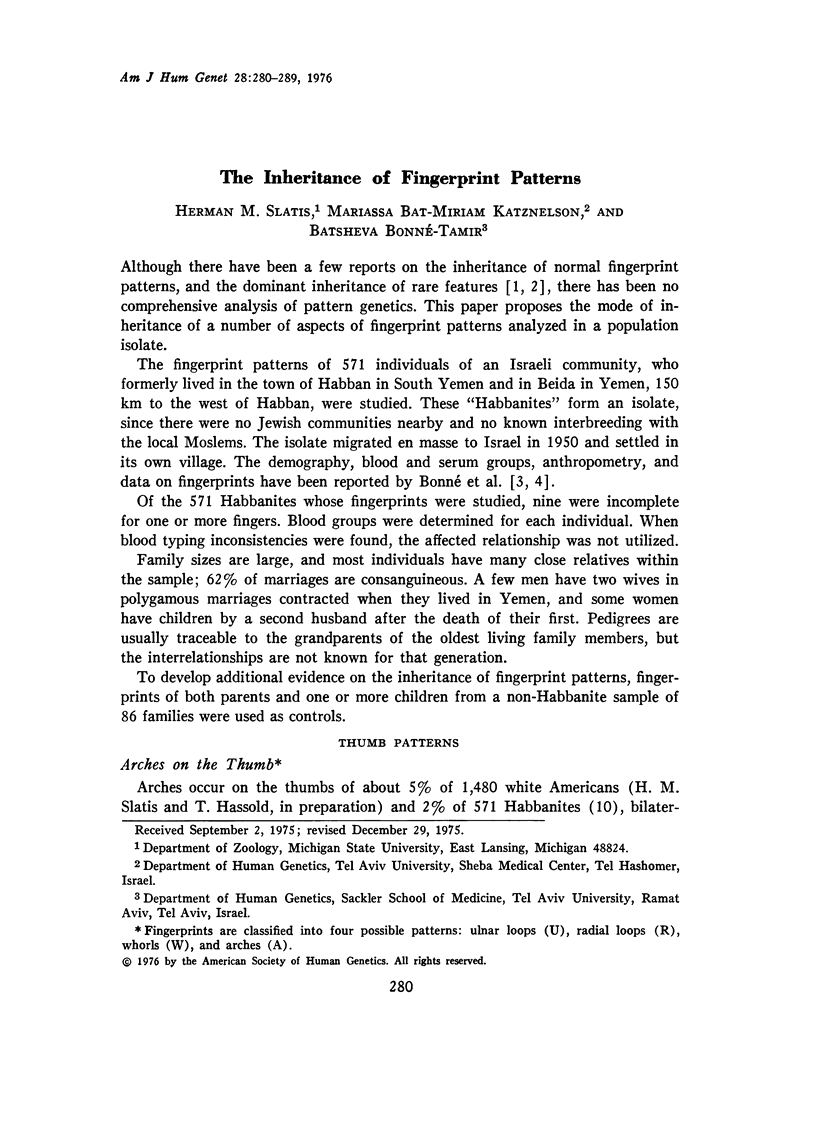
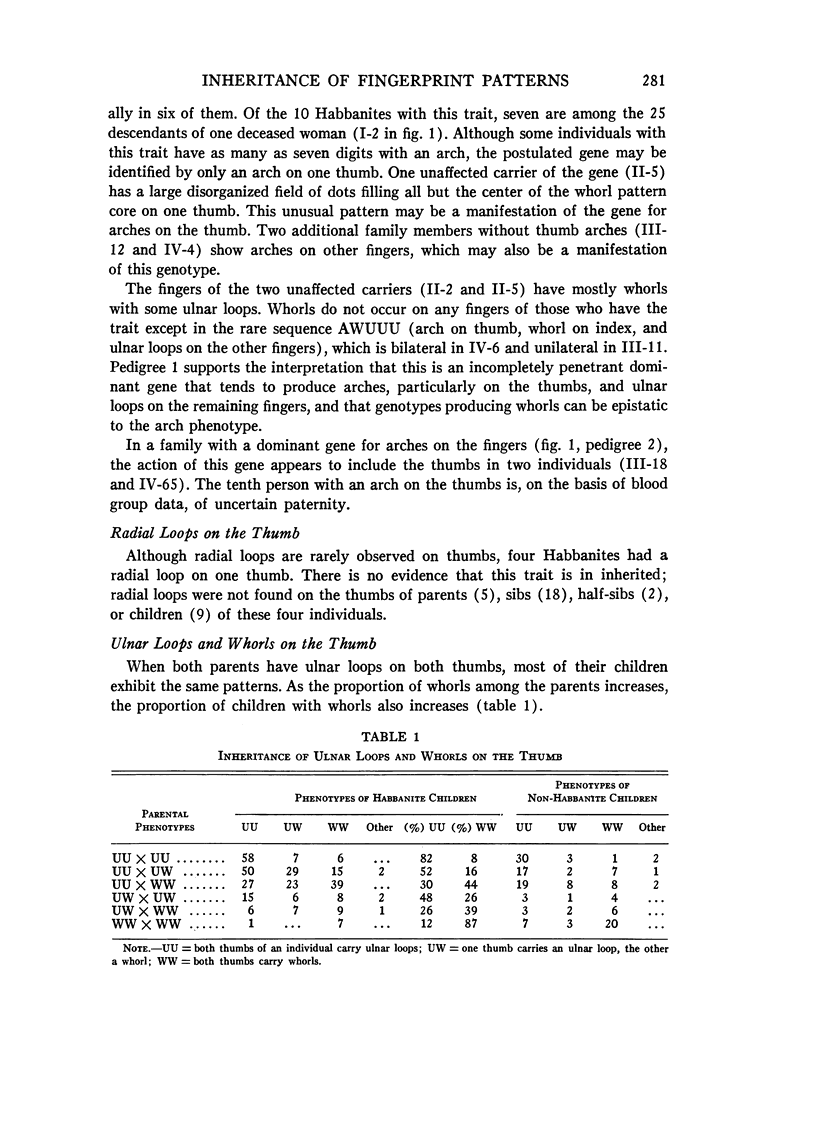
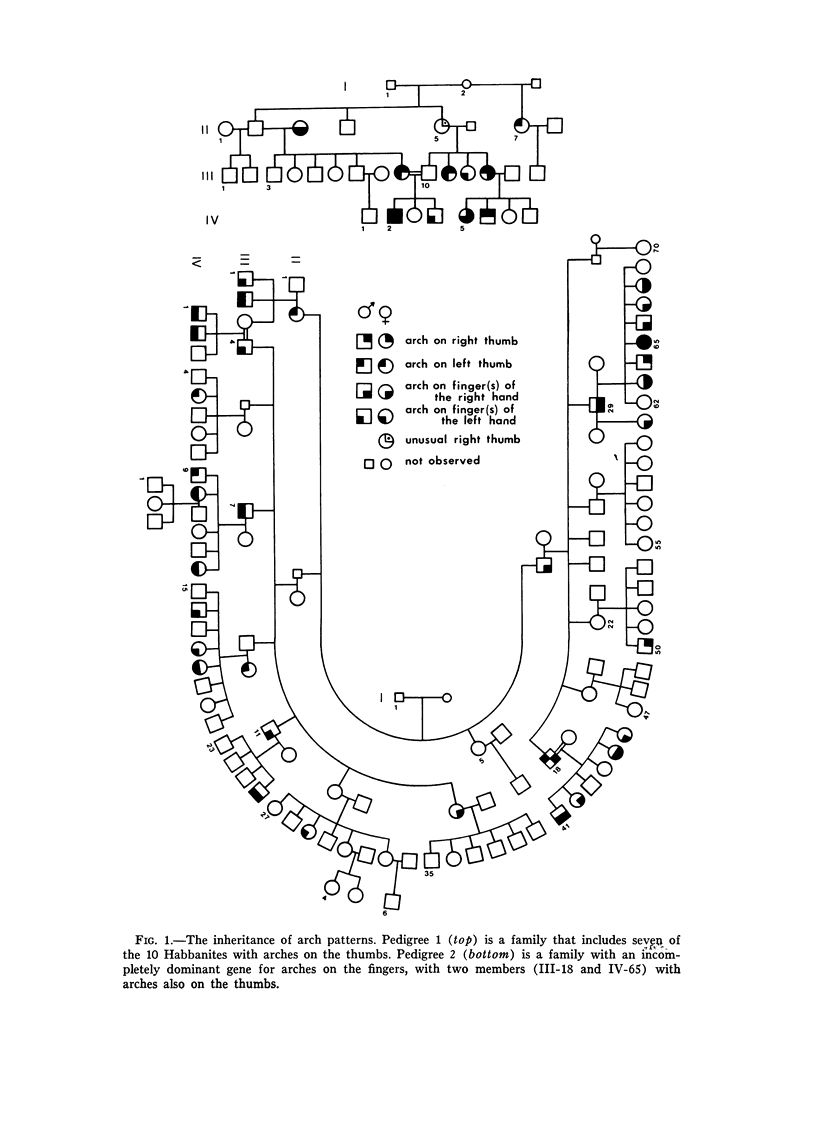
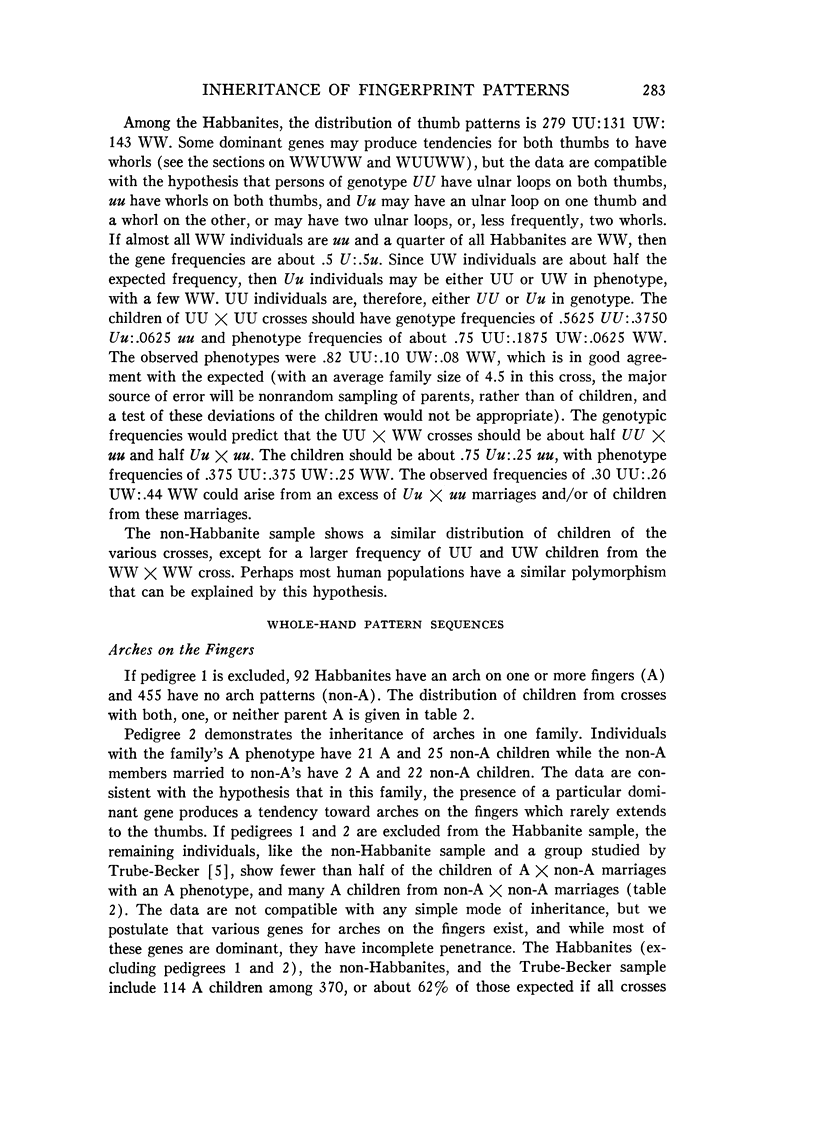
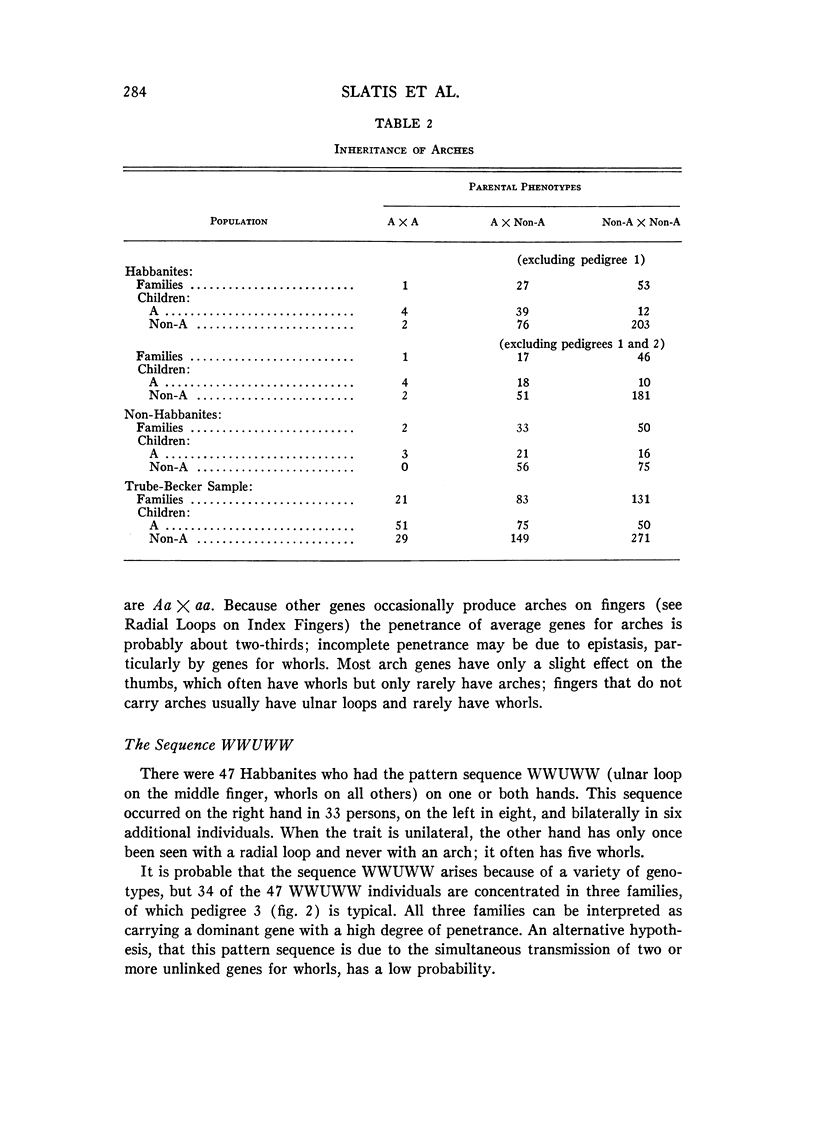
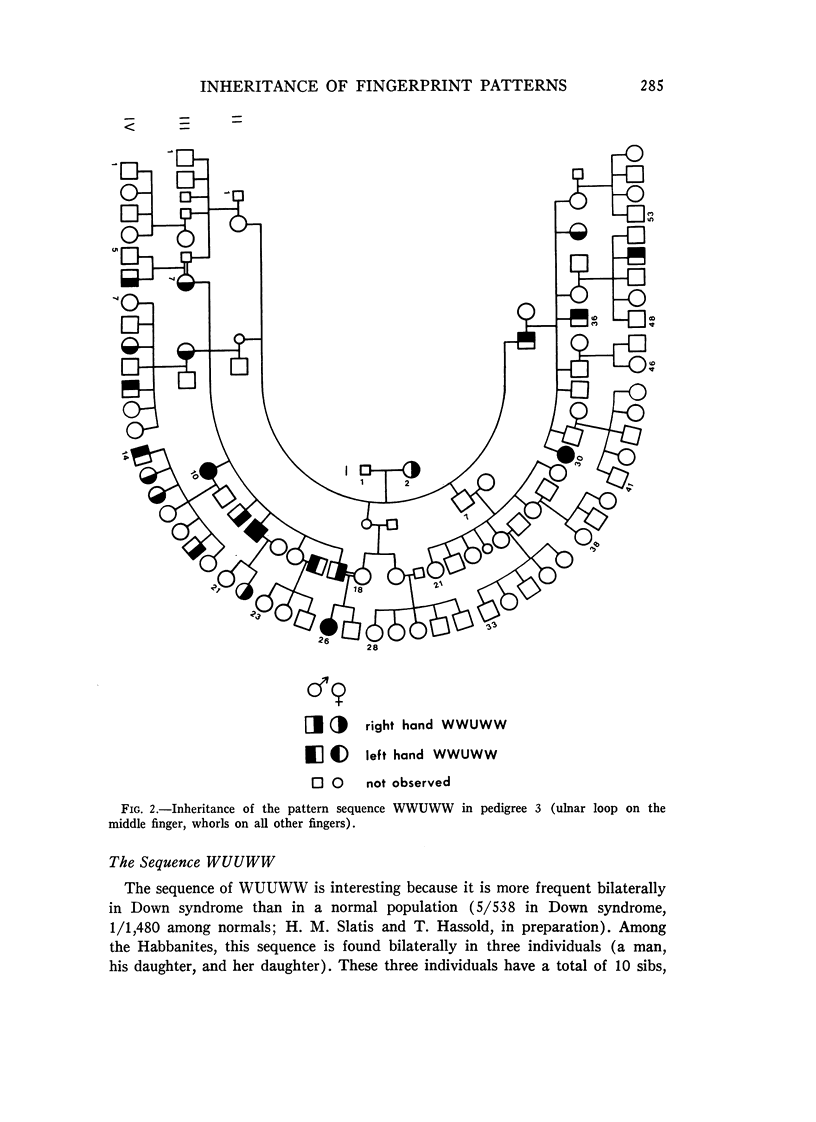
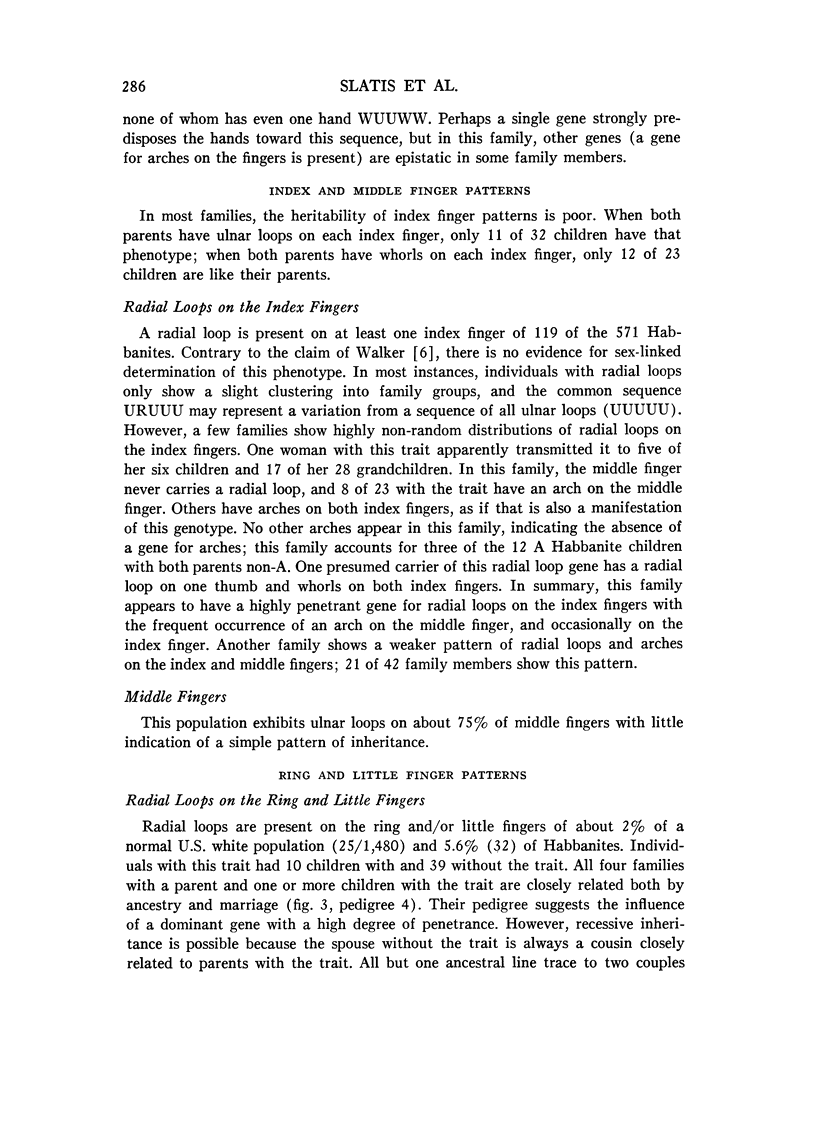
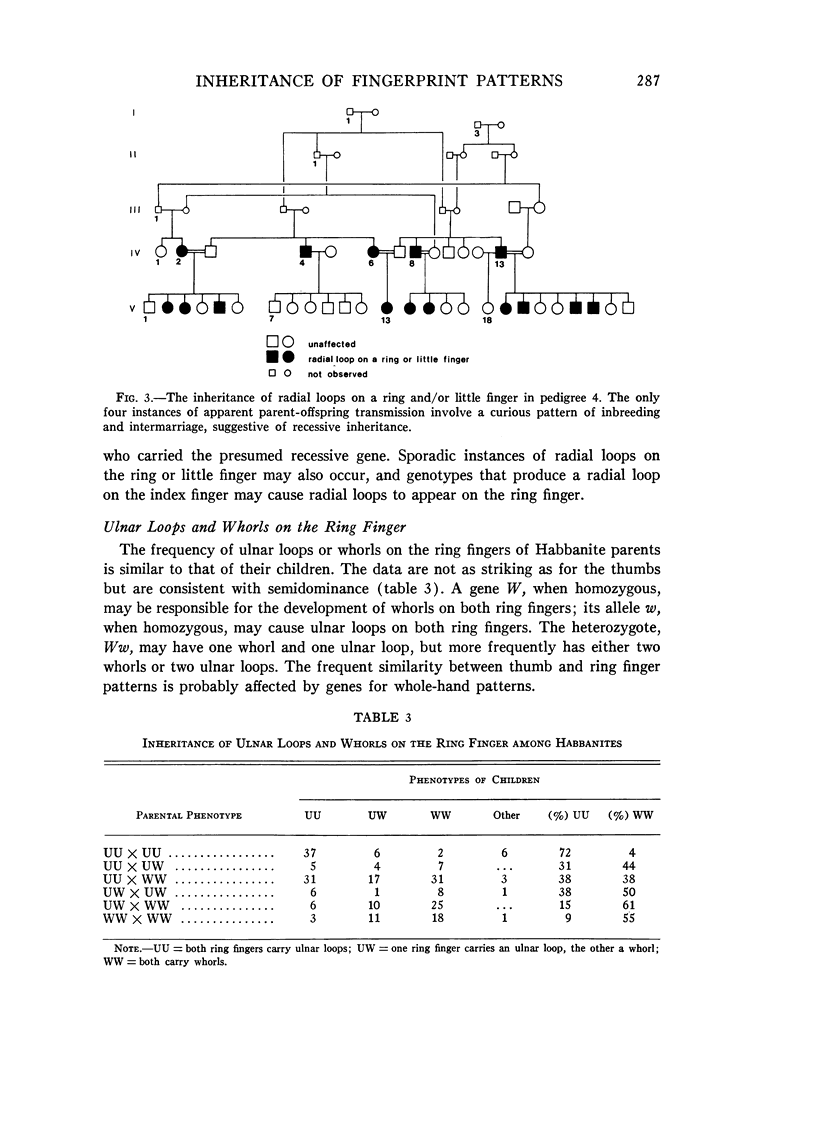
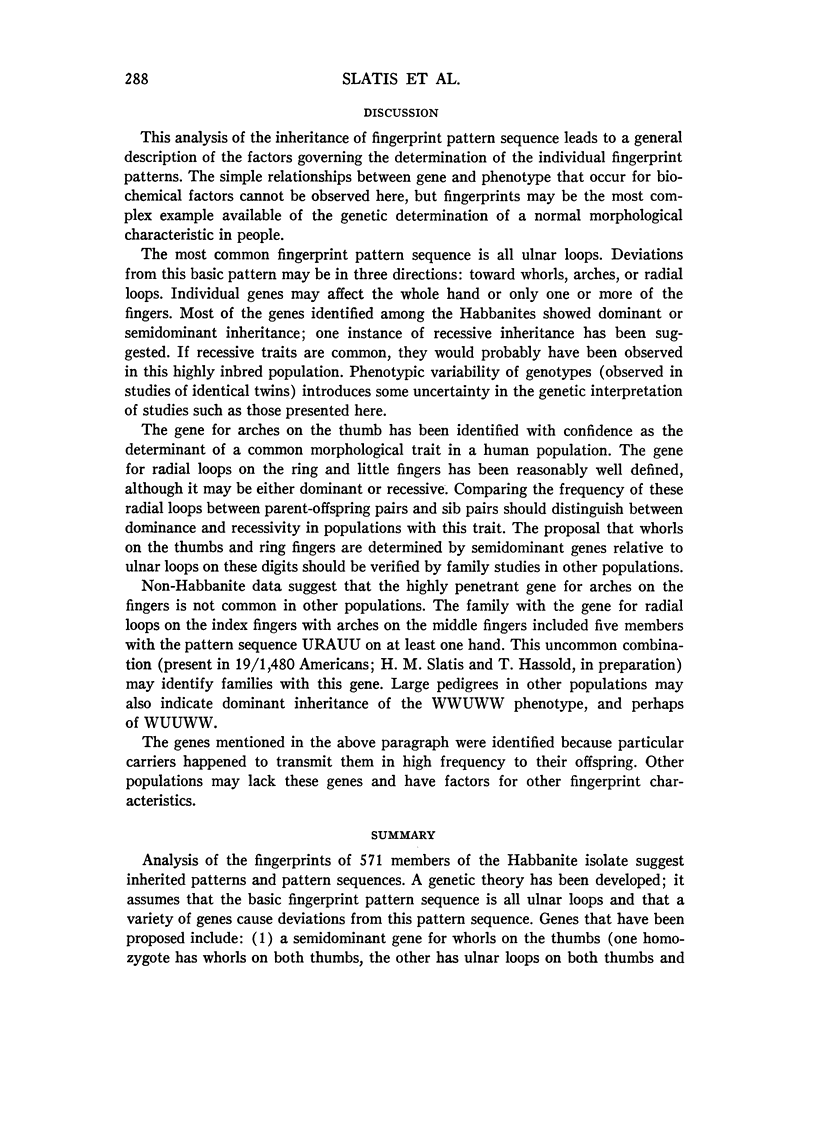
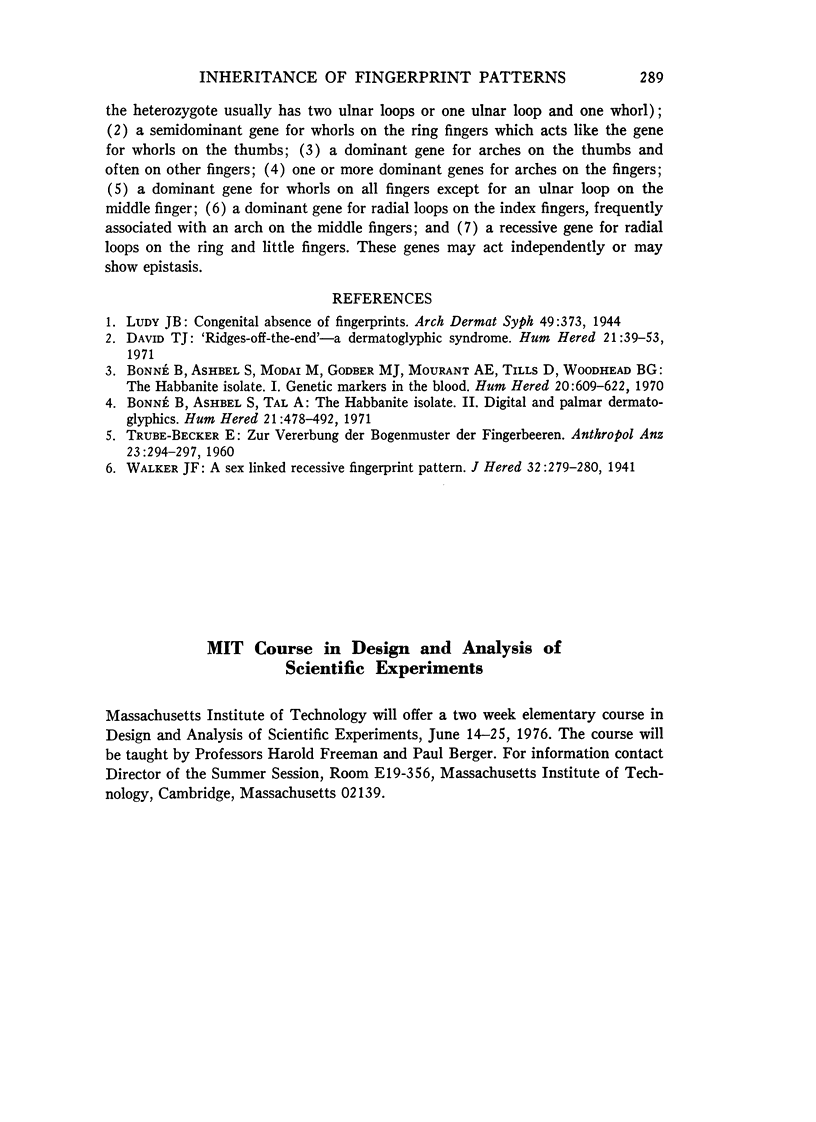
Selected References
These references are in PubMed. This may not be the complete list of references from this article.
- Bonné B., Ashbel S., Modai M., Godber M. J., Mourant A. E., Tills D., Woodhead B. G. The Habbanite isolate. I. Genetic markers in the blood. Hum Hered. 1970;20(6):609–622. doi: 10.1159/000152367. [DOI] [PubMed] [Google Scholar]
- Bonné B., Ashbel S., Tal A. The Habbanite isolate. II. Digital and palmar dermatoglyphics. Hum Hered. 1971;21(5):478–492. doi: 10.1159/000152440. [DOI] [PubMed] [Google Scholar]
- David T. J. "Ridges-off-the-end"--a dermatoglyphic syndrome. Hum Hered. 1971;21(1):39–53. doi: 10.1159/000152381. [DOI] [PubMed] [Google Scholar]


